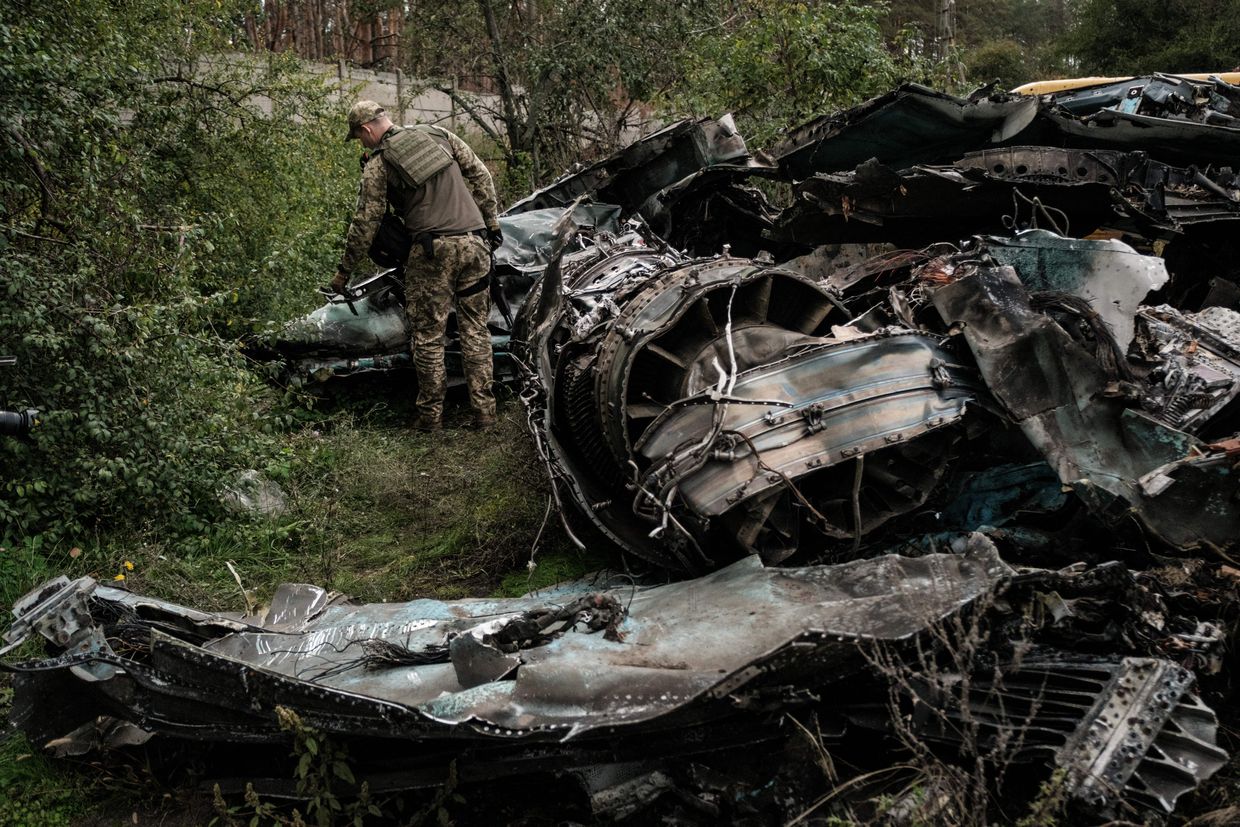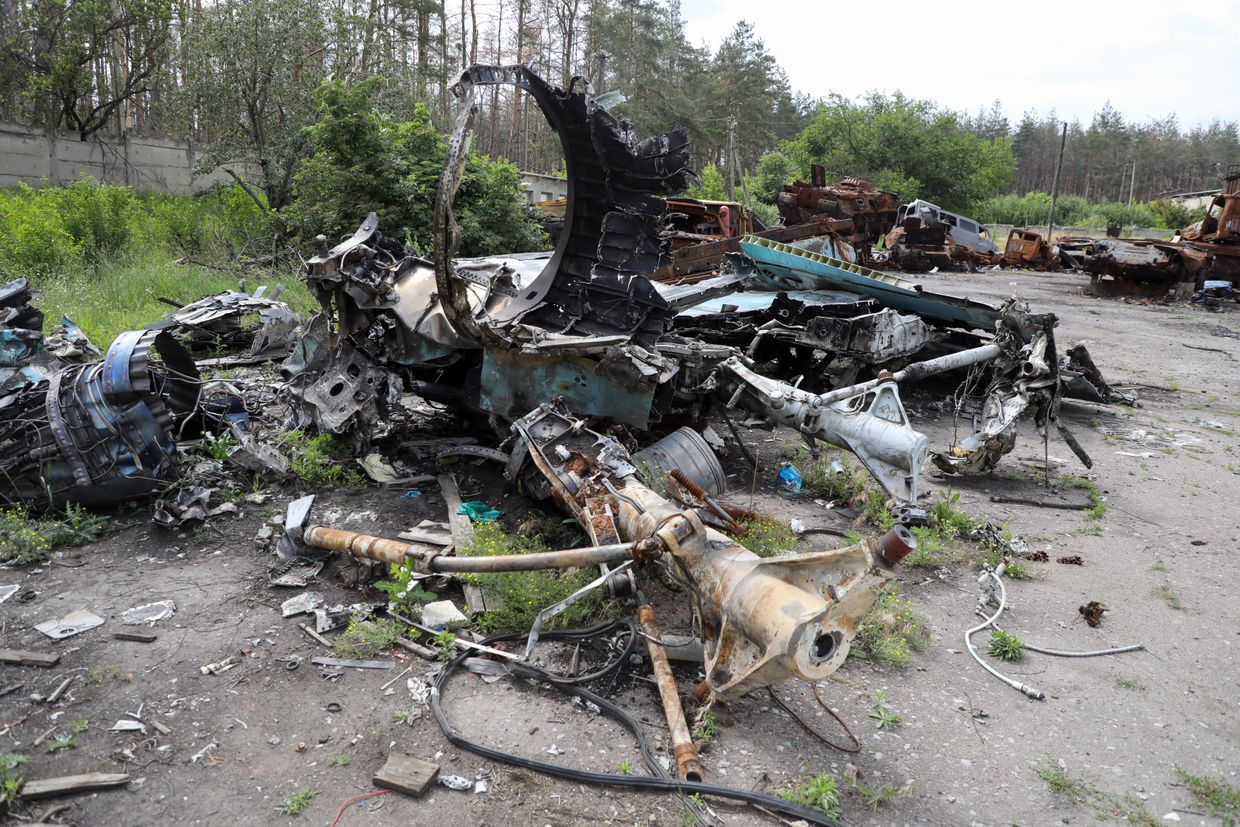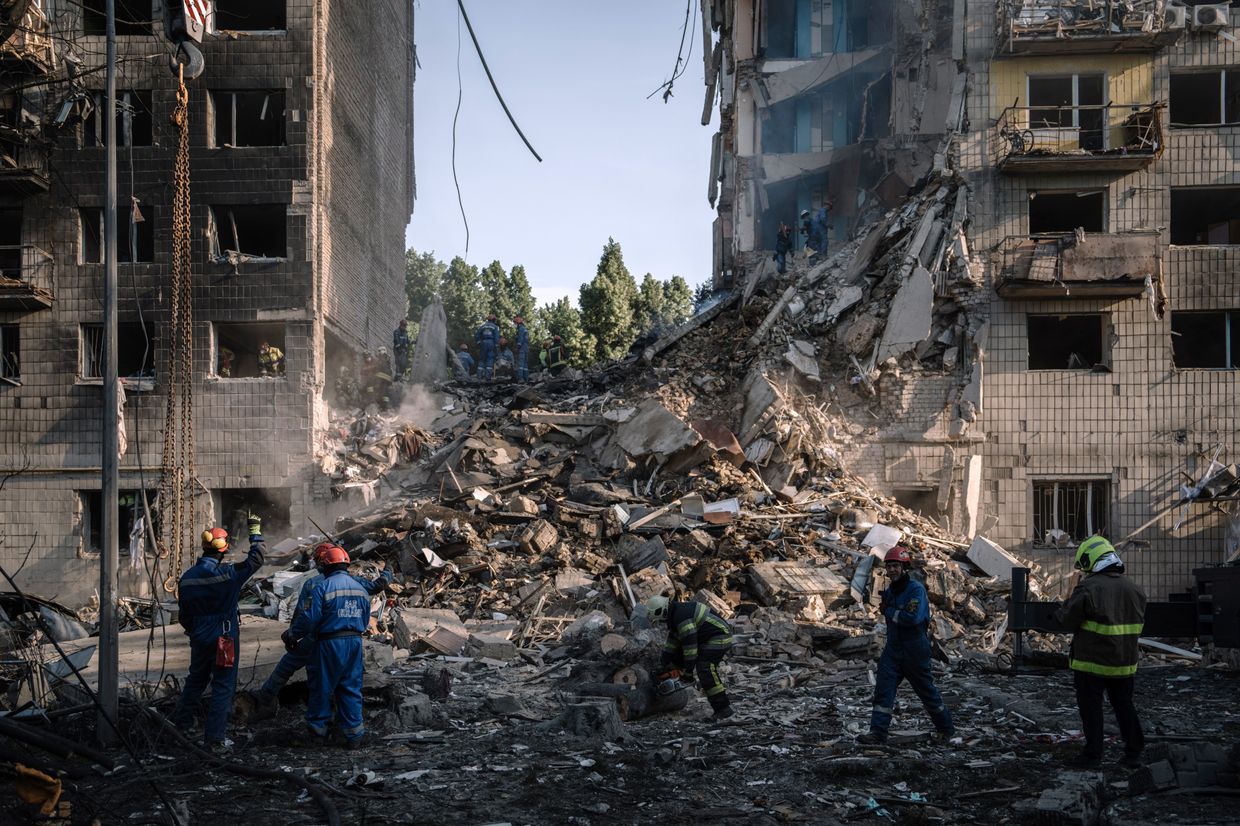Ukraine reported the downing of 13 Russian warplanes within the last two weeks, among the highest Russian Air Force losses since the early days of the full-scale invasion.
This list includes 10 Su-34 fighter bombers, two Su-35 fighter jets, and one more rare A-50 military spy plane. Another A-50 aircraft was downed a month prior. The last three Su-34s were reportedly destroyed in a single day on Feb. 29 over eastern Ukraine.
The rapid destruction of aircraft comes amid Russia's attempts to advance on the battlefield after the withdrawal of Ukrainian troops from Avdiivka and three villages in Donetsk Oblast, in addition to Ukraine's widely mentioned ammunition shortage.
Russia's total losses during the all-out war amount to about 670 aircraft units — 345 planes and 325 helicopters, according to Ukraine's General Staff. Most of the planes were downed in the early days of the all-out war.
Air Force branch commander, Lieutenant General Mykola Oleschuk, said on Feb. 27 that Russia should start thinking about decreasing the number of sorties.
But what led to the sudden February uptick in Ukrainian successful strikes?
Ukraine's 'new tools'
In the recent more aggressive attacks against Ukrainian troops in the east, Russian forces have "overcome the fear" of using aircraft directly over the battlefield, Ukraine's Centre for Defense Strategies wrote in one of its latest summaries.
This helped the Russian troops but resulted in the loss of aviation.
Guided aerial bombs, which Russia regularly drops from Su-34 and Su-35 planes to attack front-line settlements, remain one of its weapons that Ukraine is not yet able to counter.
Yuriy Ihnat, Air Force spokesman, said on national television on Feb. 29 that these days, hundreds of such bombs have been launched at Ukrainian positions in the Avdiivka sector.
"To drop a bomb, Russia needs a distance of under 100 kilometers — this is 30–40 kilometers, sometimes even closer. It all depends on the modification of the bomb, the flight distance, the altitude of the aircraft," Oleksandr Kovalenko, military analyst and co-founder of the Information Resistance project, told the Kyiv Independent.
Ukraine now has "tools" to destroy planes "at quite long distances," Ihnat told the Kyiv Independent, explaining the recent uptick.
"Ukraine has more means to reach the enemy. And it is very important to provide Ukraine with more systems and ammunition (for those tools) — anti-aircraft-guided missiles. They are produced slowly, and we have a serious expense," the Air Force spokesman added.
Justin Bronk, a senior research fellow at the U.K.-based Royal United Services Institute (RUSI), told BBC that Russia's recent losses in aviation may be due to the fact that "Ukraine is being more aggressive with risking Patriot launchers close to the front lines."
Ukraine's Air Forces don't comment on such claims, and it is unknown what kind of weapons the Ukrainian military used for the rapid destruction of Russian aviation.
Ukraine has a layered air defense system: medium-range systems include IRIS-T, NASAMS, and long-range ones — Patriot, SAMP/T, and S-300.
Primarily, these systems are used to repel Russia's regular missile strikes across Ukraine and can be moved closer to the border or the front line after a decision of the military leadership.
In May 2023, the Patriot air defense system destroyed immediately as many as five aircraft units over Bryansk Oblast in Russia — Su-34 and Su-35 planes, two rare Mi-8MTPR-1 helicopters, and one Mi-8 helicopter, Air Forces confirmed, calling it "a brilliant operation."
New А-50 loss
Ukraine's most prized hit was the A-50 spy plane that was destroyed on Feb. 23 over Russia's territory, near the town of Yeysk, about 200 kilometers from the front line.
Ukrainian soldiers could have shot it down using the Soviet S-200 air defense system, Ukrainska Pravda reported on Feb. 23, citing an unnamed source of Ukraine's military intelligence agency.
Earlier, Russia claimed that Ukraine had allegedly used revived S-200 anti-aircraft systems, which Ukraine withdrew from service in 2013.
The Ukrainian authorities and military have not officially confirmed the possible modernization and use of the S-200.
"Withdrawal (of S-200 from use) does not mean its destruction or disposal, so everything can be possible," Kovalenko said, commenting on the rumors.
In January, Ukraine reportedly shot down the first A-50 over the Sea of Azov and damaged an Ilyushin Il-22 plane that operates as an airborne command post along with it.
The destruction of two A-50s in 2024 cost Russia about $700 million, while the total number of such aircraft is down to six, according to Ukraine's Military Intelligence Chief Kyrylo Budanov.

Experts say it's too early to link the recent uptick in aircraft losses to the downing of the A-50, which provides several critical functions for Russia's Air Force, such as detecting air defense systems, guided missiles, and coordinating targets for Russian fighter jets.
"The number of A-50s Russia has left is enough to cover the airspace around the clock and conduct reconnaissance activities," Kovalenko told the Kyiv Independent.
"The nuance is the distance at which you need to be. Intelligence information depends on this."
After the destruction of the second A-50, Russia has not used these aircraft for several days. Air Force spokesman Ihnat believes that this could have helped Ukraine shoot down Russian planes at longer range.
'Closed circle'
The destruction of numerous aircraft over the past two weeks has helped push Russian planes away from the front line and decrease the intensity of the use of aerial bombs, Ihnat said.
"Russia realizes that we have something to destroy them with. Therefore, after the destruction of so many aircraft, they will be less aggressive," he told the Kyiv Independent.
At the same time, he said, Russia still has enough planes in its arsenal for war, and the issue is the number of weapons — bombs and missiles.

Kovalenko calls the Su-34 Russia's "main working aircraft" for guided bomb attacks on Ukrainian military fortified areas and defense lines.
"They (Russia) understand that every flight of the Su-34 is risky and could end in a shootdown. On the other hand, they can't do anything if they don't use them, as they can only attack with them. For Russia, there's no alternative. Fly and die."















